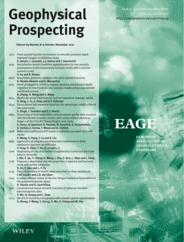
Full text loading...
 , Yibo Wang1,2
, Yibo Wang1,2 , Yikang Zheng1,2, Shaojiang Wu1,2, Xu Chang1,2, Wei Zhu1,2
, Yikang Zheng1,2, Shaojiang Wu1,2, Xu Chang1,2, Wei Zhu1,2
Electrical resistivity tomography employs L2 norm regularization in many applications. We developed the boundary‐sharping inversion method based on the finite element methods and irregular grid approach, in which the contact areas of elements are used to weight the model parameters. Similar approaches have previously only been used for structured grids. We also designed an electrical resistivity tomography system in the laboratory to conduct experimental data tests. Focusing on the imaging of small‐scale targets, we further compared the behaviour of various regularization schemes, including L2, L1 and L0 norm stabilizers. Different control parameters were tested and analysed for approximated L1 and L0 norm stabilizers. Three‐dimensional conductivity models were reconstructed from synthetic and experimental data. We found that reconstructed images obtained from smooth sparse regularization, such as L1, and L0 norm regularization are superior to L2 norm regularization for high‐contrast aquifer and block models. The synthetic and experimental data show that electrical resistivity tomography with smooth sparse regularization has the potential to improve the imaging of small‐scale targets with sharp contours.

Article metrics loading...

Full text loading...
References


Data & Media loading...

